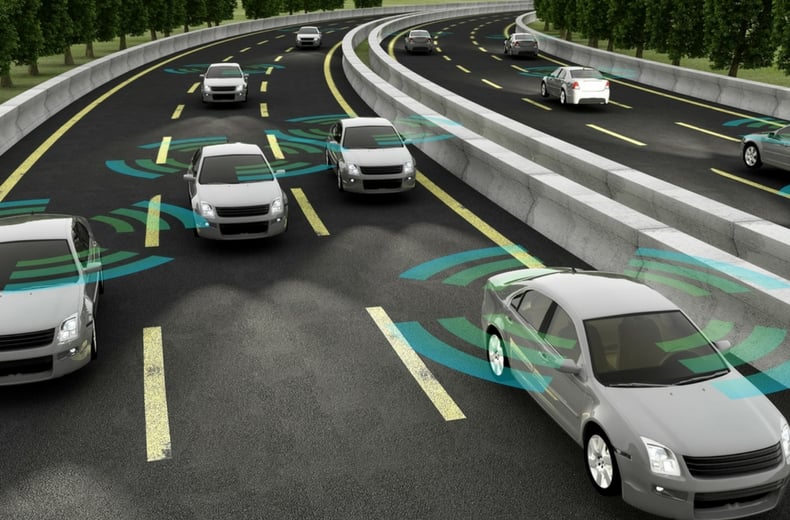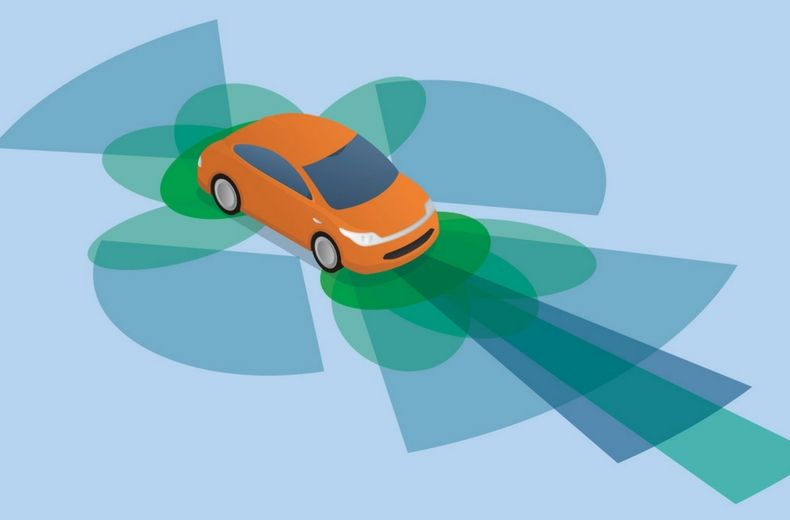Autonomous Emergency Braking (AEB) is one of the biggest safety breakthroughs yet – giving vehicles the capacity to slow themselves down when faced with a potential accident.
What is AEB?
It’s a safety system built into vehicles which monitors the traffic and road conditions ahead for signs a collision might occur.
AEB is able to warn a driver of an upcoming danger, applying the brakes if they don’t respond within due time.
With AEB applied the speed at which a collision occurs can be decreased to a life-saving degree, or ideally, impact is avoided altogether.
How does AEB work?
The way in which AEB technology reacts and operates differs by vehicle make and model, and at this stage, some systems are more sophisticated than others.
But they all work using the same principles.
AEB systems use Lidar (light detection and radar) or camera sensors, or a combination of both, to help prevent potential accidents.
Information gleaned via these elements – together with data on a vehicle’s travel speed and trajectory – helps the AEB system to decide whether a hazardous situation is developing.
When detecting a potentially critical situation most systems will first try to warn the driver that action is needed. If no driver action is taken and the AEB system judges a collision is expected, the brakes will be applied automatically.
READ MORE: Top 10 safety features modern cars should have as standard
How sudden is the braking impact?

The AEB system will determine the necessary brake force needed to be applied.
This can vary between an elevated level, and full braking force – with the aim of reducing the speed at which a collision will take place.
Different AEB systems have different operating speed ranges and there are separate types of hazards they can identify. For example, some systems are more effective in low speed urban areas, while others are better equipped to handle rural or multi-lane driving.
While systems have different capabilities, the technology is constantly adapting and improving, heading towards an AEB system with the capacity to avoid collisions altogether.
Why is AEB so important?
Not only can it reduce the speed at which a collision happens, it has the potential to stop the crash happening in the first place.
A 2015 study by The European New Car Assessment Programme (Euro NCAP) and Australasian NCAP found that AEB led to a 38% reduction in real-world rear-end crashes.
Researchers at the University of Adelaide also found in a study of 104 crashes, AEB could have reduced fatal collisions by 20-25% and the likelihood of injury by 25–30%.
Where seatbelts and airbags are in place to protect passengers in the case of a crash, AEB aims to reduce the likelihood of a crash happening in the first place.
Thatcham – a research centre that specialises in vehicle safety – recently said AEB is “probably the most significant development in car safety since the seatbelt and could save an astonishing 1,100 lives and 122,860 casualties in the UK over the next 10 years.”
READ MORE: Euro NCAP launches automated technology timeline
Which cars are fitted with AEB?

Currently, just over a fifth (21%) of new vehicles come with AEB fitted as standard, with 27% offering systems as optional extras for an additional charge.
But Thatcham reports that around 70% of new cars aren’t yet being fitted with the system at all.
How much does AEB cost as an extra?
In some cases, where AEB is offered as an extra, it can be bundled together as a safety package costing up to an additional £1,300.
In others, a simple ‘city’ version of the system can cost as little as £200 extra.
Volvo was one of the first manufacturers to launch collision avoidance technology in 2006. Two years later the company made its City Safety AEB system standard on all new Volvo models.
Volvo has since reported its AEB system has reduced insurance claims for rear-end frontal collisions by 28%.
Will AEB be fitted as standard in the future?
Steps are now being taken to ensure AEB will become standard on all vehicles in the near future.
Euro NCAP will no longer give a five-star safety rating to any car without AEB so it’s pretty likely that it will be become a compulsory feature at some point.
The European Parliament also recently called for all new cars to be fitted with AEB as standard, with the Parliament Committee on Transport set to go before the European Commission in March 2018.
The committee will publish its findings on AEB, as well as other future safety requirements for vehicles within the EU and will call for AEB systems to be mandatory for all new vehicles.
Safety body Thatcham is also behind the European Parliament’s decision to make the “lifesaving technology” standard on all vehicles.
AEB has been a mandatory requirement on most newly registered Heavy Goods Vehicles over 7.5 tonnes since November 2015.
There are only a few types of HGV exempt from the requirement such as steel suspension or four axle lorries which, in theory, could affect the performance of AEB sensors.
READ MORE: New AI system to power self-driving cars
What else is AEB called?
Various names have been adopted by manufacturers which feature elements of AEB technology across their model range:
| Manufacturer | AEB name |
|---|---|
| Audi | Adaptive Cruise Control with Pre Sense Front Pre-Sense Front Pre Sense City |
| BMW | Driving Assistant Driving Assistant Plus Active Guard |
| Citroen | Active City Brake |
| Fiat | City Brake Control Brake Control |
| Ford | Active City Stop Pre Collision Assist Active Braking |
| Honda | Collision Mitigation Braking System City Brake Active System |
| Hyundai | Autonomous Emergency Braking |
| Infiniti | Forward Collision Warning & Intelligent Brake Assist (Safety Shield) Forward Collision Emergency Braking Intelligent Cruise Control with Emergency Brake (Dynamic Safety Shield) Forward Collision Warning & Intelligent Brake Assist |
| Jaguar | Autonomous Emergency Braking |
| Jeep | Forward Collision Warning Plus Forward Collision Plus |
| Land Rover | Autonomous Emergency Braking |
| Lexus | Pre Crash System Adaptive Cruise Control System with Pre Crash Safety |
| Mazda | Smart City Braking Support |
| Mercedes | Collision Prevention Assist 3.0 Distronic Plus |
| Mini | Driving Assistant |
| Mitsubishi | Forward Collision Mitigation |
| Nissan | Forward Emergency Braking |
| Peugeot | Active City Brake Emergency Collision Alert with Emergency Braking |
| Porsche | Adaptive Cruise with Porsche Active Safe |
| Range Rover | Autonomous Emergency Braking |
| Renault | Active Emergency Braking |
| Seat | Adaptive Cruise Control with Front Assist Safety Assist Front Assist |
| Skoda | City Safe Drive Front Assist |
| SSangYong | |
| Subaru | Eyesight |
| Suzuki | Radar Brake Support |
| Tesla | Automatic Emergency Braking |
| Toyota | Pre-Crash System |
| Vauxhall | Forward Collision Warning with Automatic Brake Intervention Front Camera + Emergency Braking Front Camera + Emergency Braking Adaptive Cruise and Stop Go |
| Volkswagen | Front Assist Including City Emergency Braking City Emergency Braking |
What other car safety developments are on the horizon?
As well as continually advanced braking systems, many other aspects of car safety are becoming more autonomous.
Cadillac’s semi-autonomous-driving Super Cruise system, for example, uses the car’s existing driver assistance features like cruise control and adds in new Lidar-scanning and self-steering functions to avoid accidents.
The Lexus LS sedan and Volvo XC60 crossover SUV also offer a self-steering function which allows them to detect and avoid collisions in various circumstances.
Volvo’s City Safety system, for example, can detect and avoid pedestrians in its path at low-speeds.
Last year, the EURO NCAP issued a report stating that, in addition to AEB, it expects driver monitoring, automatic emergency steering, Vehicle to Vehicle Data Exchange and Vehicle to Infrastructure, to all be fitted as standard in new cars by 2024.

RAC Breakdown Cover
Limited time offer.
*£7 a month for new, single vehicle Basic cover. ^For all named members when added to new Extra or Complete cover. Included in Family cover as standard. Excludes Basic cover. Ends 08/05/24, 7am.











